Global Web Design Showcases
Here is hand-picked selection of the most popular Smashing Magazine’s articles featuring the design trends and artists from the different countries of the world.
Quick Overview
- Weird And Wonderful, Yet Still Illegible
- Japanese, A Beautifully Complex Writing System
- The Story Of Scandinavian Design: Combining Function and Aesthetics
- Web Design In The Arab World
- Web Design In Poland
- Web Design In The Netherlands
- Web Design In Lithuania
- Web Design In China
- Web Design In Israel
- Web Design In Germany
- Web Design In Mexico
- Web Design in Ireland
- Web Design in Russia
Weird And Wonderful, Yet Still Illegible
The paradigm shift—wrought by the personal computer, Postscript and desktop publishing—should have had a massive impact on the shapes of our typographic characters, just as the advances of the World Wide Web further changed the way we viewed words (even though letterforms change at the pace of the most conservative reader). Thus, radical innovations like Kurt Schwitters’ Systemschrift, (a phoenetic alphabet from 1927), are doomed to fail.
Our writing, which is derived from either Roman or Gothic forms (and sometimes both), is historic and non-systematic, said Schwitters. His “optophoenetic” approach was to make the shapes of the letters more accurately reflect how they sounded. But in order for it to work, massive re-education would be required.
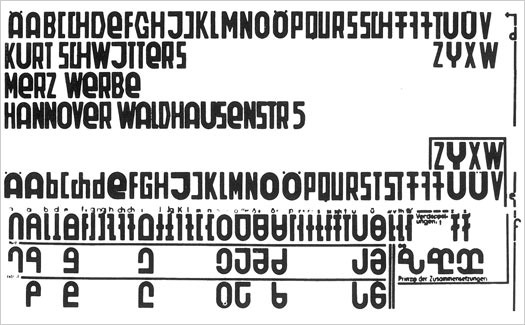
Licko was paraphrasing Sir Cyril Burt who wrote, “almost everyone reads most easily matter set up in the style and size to which he has become habituated.” (A Psychological Study of Typography, Cambridge, 1959, p. 18). So we do not necessarily respond to “beautiful” type. You may find Centaur elegant, but others will find the spiky serifs distracting. For this reason, rather dull typefaces (like Times Roman), come to dominate our graphic landscape. My purpose here is to examine some failed attempts at creating economy, or furthering the cause of legibility.
Japanese, A Beautifully Complex Writing System
As a Japanese person living in Europe, I’m sometimes asked: “Japanese is a difficult language, isn’t it?” Those asking are often surprised when my answer is a simple: “No, actually, it’s not.”
While it is true (at least to many Westerners) that Japanese is an exotic language, when compared to learning other European languages, it may seem harder because it has no relation to their own language. But from my own experiences of learning English and German (and also from seeing some European friends learning Japanese), I can say with confidence that learning spoken Japanese is, in fact, not so difficult. The grammar is in many ways simpler than most European languages. Take for example the fact that we don’t have cases, grammatical genders, nor articles. However, reading and writing in Japanese is… well, not so simple.

While discussing typography we most often focus on English language problems, which is only natural considering that the majority of design material is written in English. However, a lot can be gleamed by looking at how other languages are used as part of communication and design — it helps to lend context and a different point of view.
The Story Of Scandinavian Design: Combining Function And Aesthetics
This article was written by Katrín Eyþórsdóttir, our talented and hard-working trainee from Iceland. As a designer with background in product design, Katrín is presenting her understanding of what has influenced the works of designers from Sweden, Norway and other North-European counties as well as the key attributes that these works possess.
For a long time, art has been heavily influenced by the social and political landscape. Searching through history, we find that while the social views of a certain period may no longer be relevant, the art and design of that time often are. Designers today constantly draw inspiration from history, consciously and unconsciously. Being aware of that history and knowing what has come before in your field can help you better convey the meaning in your work and forge deeper connections to your environment (artistic, social, political, etc.).
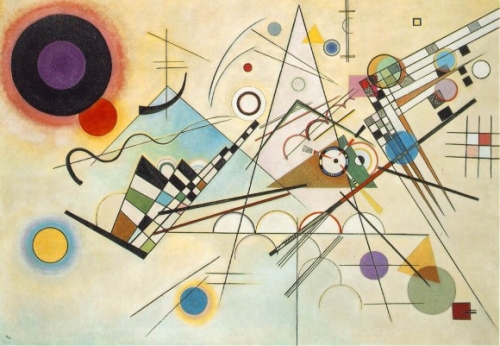 Looking back to the beginning of the 20th century and the styles and movements that ruled the art world at that time, we will look for influences and ideas that have evolved into what has been known since the mid-20th century as “Scandinavian design”. This article also offers some **thoughts on how to incorporate its principles in your work today**.
While the countries of Scandinavia have extreme differences, they do have some common cultural, geophysical and historical threads. Without implying that certain principles apply to all art and design in this area, this article gives an overview of the influences and state of art and design in the Nordic countries.
[Read more...](https://www.smashingmagazine.com/2011/06/13/the-story-of-scandinavian-design-combining-function-and-aesthetics/)
## [Showcase Of Web Design In The Arab World](https://www.smashingmagazine.com/2010/09/19/showcase-of-web-design-in-the-arab-world/ "Permanent Link to Showcase Of Web Design In The Arab World")
Sand, magic carpets, Islamic art, Mecca, turban, luxury, camels, incense, Ali Baba and the 40 Thieves, arabesque art and cous cous are just a few of the images that spring to mind when thinking Arab world. But there is actually a misconception of what is the ‘Arab world’. Most often the ‘Arab world’ is thought of as solely the Middle East. The Middle East however is only the geographical area defined by the lands between Egypt and south-west Asia. The Arab world is much much larger. The geographical expanse of the Arab world reaches far wider when it is correctly defined by **countries which are Arabic speaking**.
Looking back to the beginning of the 20th century and the styles and movements that ruled the art world at that time, we will look for influences and ideas that have evolved into what has been known since the mid-20th century as “Scandinavian design”. This article also offers some **thoughts on how to incorporate its principles in your work today**.
While the countries of Scandinavia have extreme differences, they do have some common cultural, geophysical and historical threads. Without implying that certain principles apply to all art and design in this area, this article gives an overview of the influences and state of art and design in the Nordic countries.
[Read more...](https://www.smashingmagazine.com/2011/06/13/the-story-of-scandinavian-design-combining-function-and-aesthetics/)
## [Showcase Of Web Design In The Arab World](https://www.smashingmagazine.com/2010/09/19/showcase-of-web-design-in-the-arab-world/ "Permanent Link to Showcase Of Web Design In The Arab World")
Sand, magic carpets, Islamic art, Mecca, turban, luxury, camels, incense, Ali Baba and the 40 Thieves, arabesque art and cous cous are just a few of the images that spring to mind when thinking Arab world. But there is actually a misconception of what is the ‘Arab world’. Most often the ‘Arab world’ is thought of as solely the Middle East. The Middle East however is only the geographical area defined by the lands between Egypt and south-west Asia. The Arab world is much much larger. The geographical expanse of the Arab world reaches far wider when it is correctly defined by **countries which are Arabic speaking**.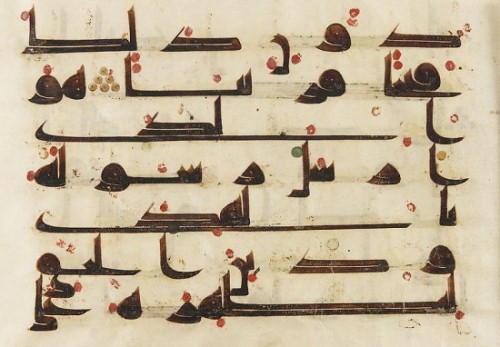
The history of this expansive region is so deep that it is foolhardy to skim over how the past has influenced art and hence inspired, to a degree, modern web design. For example, Islam, the predominant religion of the Arab world, laid the ground stones for Islamic Art. One of the major reasons that Islamic art is rich in patterns and ‘arabesque’ repetition of forms such as geometrical floral designs is because it is feared by many Muslims that the depiction of the human form is idolatry and thereby a sin against Allah, forbidden in the Qur’an.
Showcase Of Web Design In Poland
Vodka, pickled cucumbers and Pope John Paul II might spring to mind when someone mentions Poland. Obviously there’s more to Poland than that. On the world map of design, Poland is marked by creative agencies that produce high-level design and employ some of the best programmers in the world. There’s also a crowd of freelancers and visionaries who have received worldwide recognition.

For the people I interviewed, Web design is life. The art directors and freelancers highlighted here work in all sorts of environments, and they answer questions related to our field. You’ll have the opportunity to see Polish Web design from a number of perspectives — and to form your own opinion while browsing selected productions.
Showcase Of Web Design In The Netherlands
The Netherlands, also known as the “Low Countries,” is a small, crowded, muddy piece of land through which a few big important rivers fortunately run. In this country, you can find coffee shops, wooden shoes, tulips, windmills and a lot of water. And everything is rather small! Well, at least most of the architecture is. How cute is that? But it’s also the land that brought the world many great painters, famous architects, and excellent graphic, fashion and interior designers. We all know Rembrandt, Van Gogh, Mondriaan, Rietveld, Koolhaas, Escher, Droog Design and Viktor & Rolf, don’t we?
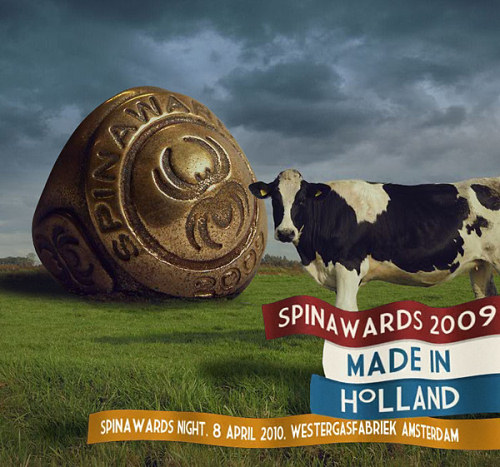
Can the Dutch be proud of its Web design community? Is it capable of producing great websites? Has the community earned a place in Web design land, or is Dutch Web design still in its infancy?
Showcase Of Web Design In Lithuania
It may be small, but Lithuania is the geographic center of Europe, and the meeting of Western and Eastern culture is evident. Lithuania is one of three Baltic countries, so-called for its proximity to the Baltic Sea. In 2009, it celebrated the thousand-year anniversary of its name.
Lithuania is known worldwide for its love of basketball, but today we’ll acquaint you with its Web design industry. In Web design, Lithuania is still a young country; the Internet boom began only about five years ago, and the country doesn’t have a good Web design school.

Most Web designers have studied in Western countries or are self-taught. Most work is done for hotels, rural tourism and real estate websites. Lithuania quickly adopts new technologies, and demand for Web designers and developers is increasing. While preparing this showcase, I noticed that many Lithuanian Web designers like Flash technology. Many websites have Flash elements, which can help present a company’s goals, services and prior work. Flash can help websites look professional, modern and dynamic.
Showcase Of Web Design In China: From Imitation To Innovation
China is a country with five thousand years of civilization. It is a multi-national entity extending over a large area of East Asia. China’s cultural influence extends across the continent, with customs and writing systems adopted by neighboring countries including Japan, Korea and Vietnam.

China has gone through numerous ups and downs and twists and turns, from wealthy and prosperous (as during the Tang Dynasty back in 618–907 AD) to powerless and colonized (as during the Qing Dynasty, just around 100 years ago). Now China is reopening its door to the world again, embracing the latest trends, concepts and technologies, the World Wide Web being one of them.
In our interviews with six well-known designers in China, each of whom wears different hats, the recurring theme was that China’s Web design industry is rising like a spiral from imitation to innovation and user-centered design.
Shalom! Showcase Of Web Design In Israel
Israel is a young country with an old heart. It has been quickly built up over the last 60 years as an independent democratic Jewish state and is shockingly cutting edge for a country so new.
It is a tiny surreal sliver of land smack dab in the middle of the Middle East: a very European, modern civilization… just programmed to Jewish tradition. Israel has great weather, nice beaches along the Mediterranean sea, fresh and tasty food and a warm and friendly culture. It is home to historic holy sites of the world’s three major religions, and buses drive down streets whose stones are older than anything you’ll find in Europe.

It feels as if Israel has one foot in Silicon Valley and the other in ancient Canaan — with an undercurrent of Middle Eastern hospitality and culture in this already multi-cultural society. And yet, English is commonly spoken here because many Jews from all over the world immigrate here regularly (not to mention the thousands of tourists from around the globe who pour in for sun, falafel, nightlife and a dash of biblical archaeology.) In some areas, you hear as much Spanish, French, Russian and English on the streets as Hebrew.
Showcase Of Web Design In Germany
Germany, which is situated in the heart of Europe and neighbors nine other countries, is not only the motherland of eminent philosophers, poets, composers, world-famous automobiles and great beer, but also a place where some of the most talented and highly ranked Web designers live.
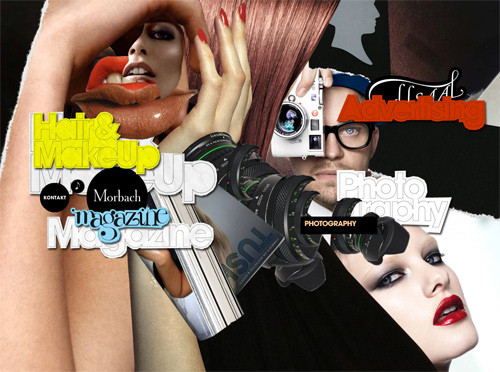
German design is certainly worthy of respect and a delight to the eye of anyone who takes the time to observe it. For years, we have accumulated knowledge, upheld eternal principles of style, simplicity and accessibility, adopted best practices and kept up with the latest global trends. I’m proud to present here a showcase and discussion of world-class German Web design.
¡Viva Mexico! Showcase Of Web Design In Mexico
This post is the third article of our new series “Global Web Design“. Throughout this series we’ll be covering various continents, featuring web developers and web designs from different countries of the world and taking a close look at what’s happening in the web design scene worldwide. We started with Russian web design and Web Design in Ireland. We continue now with Mexico and next week with Israel. If you would like to prepare an article for this series, please contact us so we can discuss the details.
Land of tequila and mariachi, home of Chichén Itza (one of the new seven wonders of the world), amazing beaches, cheerful people, beautiful women… and last but not least, inspirational and creative Web designs for the entire world. Ours is a great country, with more than 110 million inhabitants, over 30% of which to date are connected to the Web.
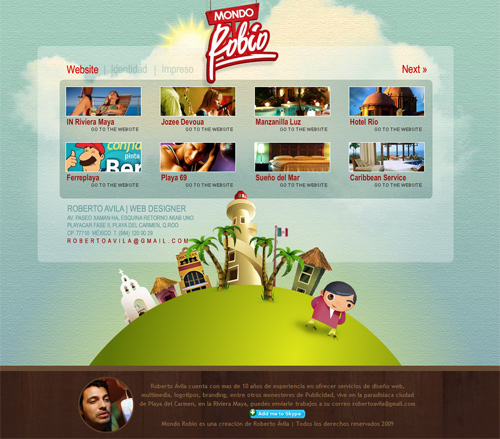
Design has always been integral to our culture: the majestic pyramids built by the Aztecs; the numeric symbol “zero” created by the Mayans (who, by the way, were the architects of the great Chichén Itza); the colonial buildings influenced by the Spaniards and French; beautiful paintings by well-known artists such as Diego Rivera and Frida Kahlo; and now today’s great architects and artists, design firms, interactive agencies and software engineers.
To gain greater insight into Web design happening in Mexico today, we interviewed many people in the industry: freelancers, digital marketing managers, creative interactive agency reps and a few bloggers.

To give you an insight into some of the interesting stuff happening, I’ve interviewed several high profile Irish designers involved in the web industry and how they feel Ireland is making an impact on the rest of the world, along with a showcase of some of the more inspiring websites being produced.

The era of professional and commercial online design started in Russia about a decade ago. We’re now seeing an increase in professional design and development. I won’t concentrate much on the history of Web design in Russia; that has been happening for ages. Like everywhere in the world, Web design came to Russia as a modern way to present any kind of information to an audience online. So, principles such as simplicity, accessibility and eye-catching design have been cultivated for several years.
Web development as a profession was relegated to the elite for years until geek heads and artists took it over. For a few years there was a boom of home pages and tiny corporate websites that were built with any regard for the end user. This trend ended thankfully, in large part due to the highly scaled websites that came out some original and still unique studios founded back in the end of 90s.
Further Reading
You might be interested in the following “Best of” selections as well:
- Learning From The Past: Design Legacies & Arts
- Web Design Elements: Examples And Best Practices
- Web Design Navigation Showcases
- Web Form Design: Showcases And Solutions
- Web Design Showcases From Various Industries
 (mrn)
(mrn)

 SurveyJS: White-Label Survey Solution for Your JS App
SurveyJS: White-Label Survey Solution for Your JS App

 Agent Ready is the new Headless
Agent Ready is the new Headless


